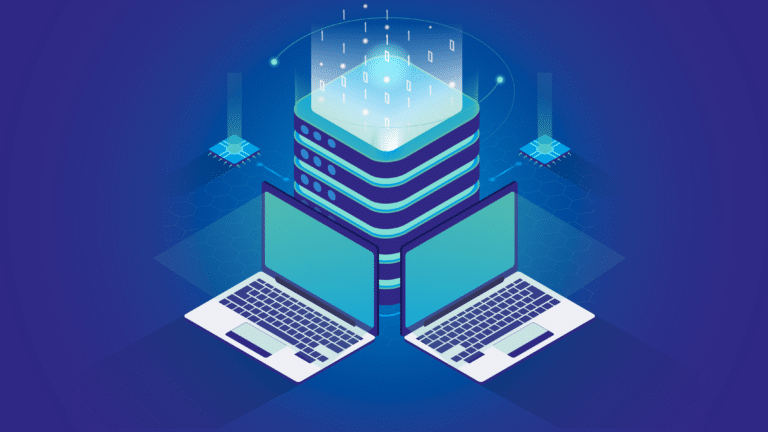- 22 May 2025
- 30 May 2025
- 3 min read
Speak to an expert : Live Chat
Most of us have probably heard the term bandwidth being mentioned in relation to the internet, but how many of us actually know what it means?
When comparing internet providers, understanding the terminology used will ensure you get the right product for your hard earned cash. Bandwidth and internet speeds are often, incorrectly used interchangeably and can therefore be confused for one another.
In simple terms, bandwidth is the amount of data you can send and receive, while internet speed is how quickly each bit of data can be uploaded or downloaded. The higher your bandwidth capacity the faster your data is transferred.
Think about a hose pipe, if it is narrow then the amount of water and the speed of the flow is limited. In comparison, a wider hose pipe can carry more water and therefore the speed at which it is released is also increased. Using that analogy and applying it to bandwidth – the higher the bandwidth, the greater the capacity and therefore the quicker the data moves.
When information is sent or received across an internet connection it is broken down into smaller segments referred to as ‘bits’ of data. The capacity of a connection refers to how many of these bits it can send and receive within a given unit of time, in this case, seconds.
Bandwidth is most commonly expressed as megabits per second (Mbps), not to be confused with megabytes. In today’s market, ultrafast gigabit broadband connections have become mainstream which is important when it comes to schools and businesses and their ever changing needs during the Covid-19 pandemic.
In this instance the measure is gigabit per second (Gbps), often shortened to ‘gig’. One Gbps is equal to 1000 Mbps, which gives you an idea of just how fast it is!

This completely depends on the amount of users you have and how many devices are being used at any one time.
Bandwidth tends to be a factor when it comes to streaming online content, whether it’s video or audio. Video calling or conferencing can also be impacted and even basic browsing can be painfully slow due to the restricted capacity of the network, so these are all things you need to consider.
For example, if you have 100 employees and each one has a computer or laptop, VoIP desk phone, video conferencing is commonplace as is large data backups, then you may want to consider a symmetric service offering 1Gbps such as leased line or dark fibre.
Whereas, if you’re a small business and only use the internet modestly for emails, browsing the web and sending and receiving small amounts of data, then you shouldn’t need much bandwidth and an asymmetric service such as ADSL, FTTC or FTTP will suffice.
This is completely dependent on the type of connection you have. If you currently have an ADSL or FTTC connection unfortunately the bandwidth you currently have is probably as good as it’s going to get. However, if you’re lucky enough to have FTTP then scalable options should be available, with most providers offering an upgrade path if you require a faster connection.
The even better news is that when you are talking about leased lines or dark fibre, the possibilities and capabilities are pretty much endless. If you have one of these connections then you have the benefit of receiving up to 10Gbps with options available to increase the bandwidth to suit your needs. Even more impressive, with dark fibre you can change your speed at practically any time. So if you want to temporarily speed up your line to accommodate extra users for a day it’s made possible with the flexibility of a dark fibre service.
For further information on our IMS Policy contact:



Exa is a trading name of Exa Networks Limited | Registered Company Number: 04922037 | VAT Number: 829 1565 09 | © Copyright Exa Networks Limited 2024 | All Rights Reserved
Exa is a trading name of Exa Networks Limited
Registered Company Number: 04922037
VAT Number: 829 1565 09
© Copyright Exa Networks Limited 2024 | All Rights Reserved
| Cookie | Duration | Description |
|---|---|---|
| cookielawinfo-checkbox-analytics | 11 months | This cookie is set by GDPR Cookie Consent plugin. The cookie is used to store the user consent for the cookies in the category "Analytics". |
| cookielawinfo-checkbox-functional | 11 months | The cookie is set by GDPR cookie consent to record the user consent for the cookies in the category "Functional". |
| cookielawinfo-checkbox-necessary | 11 months | This cookie is set by GDPR Cookie Consent plugin. The cookies is used to store the user consent for the cookies in the category "Necessary". |
| cookielawinfo-checkbox-others | 11 months | This cookie is set by GDPR Cookie Consent plugin. The cookie is used to store the user consent for the cookies in the category "Other. |
| cookielawinfo-checkbox-performance | 11 months | This cookie is set by GDPR Cookie Consent plugin. The cookie is used to store the user consent for the cookies in the category "Performance". |
| viewed_cookie_policy | 11 months | The cookie is set by the GDPR Cookie Consent plugin and is used to store whether or not user has consented to the use of cookies. It does not store any personal data. |
Monday: 8:30am – 5pm
Tuesday: 8:30am – 5pm
Wednesday: 8:30am – 5pm
Thursday: 8:30am – 5pm
Friday: 8:30am – 5pm
Saturday: Closed
Sunday: Closed
Email: helpdesk@exa.net.uk
Phone: 0345 145 1234
Monday: 8am – 6pm
Tuesday: 8am – 6pm
Wednesday: 8am – 6pm
Thursday: 8am – 6pm
Friday: 8am – 6pm
Saturday: 10am – 4pm
Sunday: 10am – 4pm